All of the sensors and input switches can be diagnosed using a scan tool. Following is a short description of how the sensors and switches can be diagnosed by using a scan tool. The scan tool can also be used to compare the values for a normal running engine with the engine you are diagnosing.
Engine Coolant Temperature (ECT) Sensor
The engine coolant temperature sensor is a thermistor (a resistor which changes value based on temperature) mounted in the engine coolant stream.

Low coolant temperature produces a high resistance (100,000 ohms at -40°C/-40°F) while high temperature causes low resistance (70 ohms at 130°C/266°F).
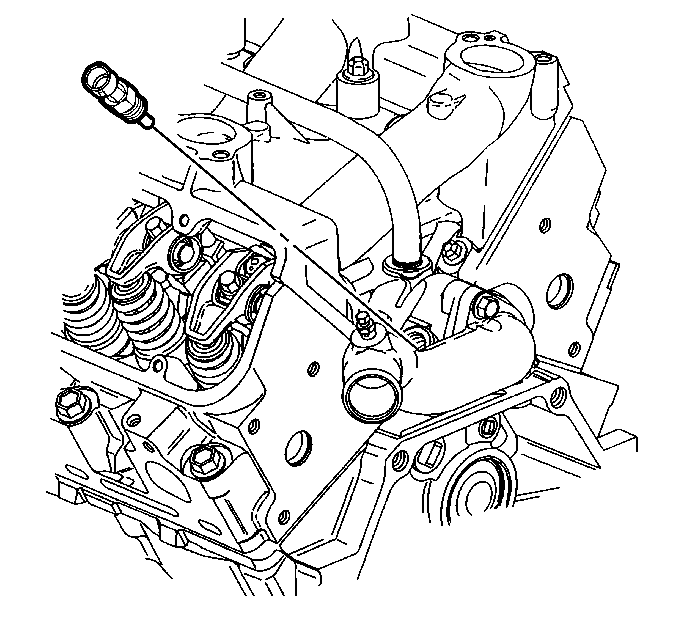
The PCM supplies a 5.0 volt signal to the engine coolant temperature sensor through a resistor in the PCM and measures the voltage. The voltage will be high when the engine is cold, and low when the engine is hot. By measuring the voltage, the PCM calculates the engine coolant temperature. Engine coolant temperature affects most systems the PCM controls.
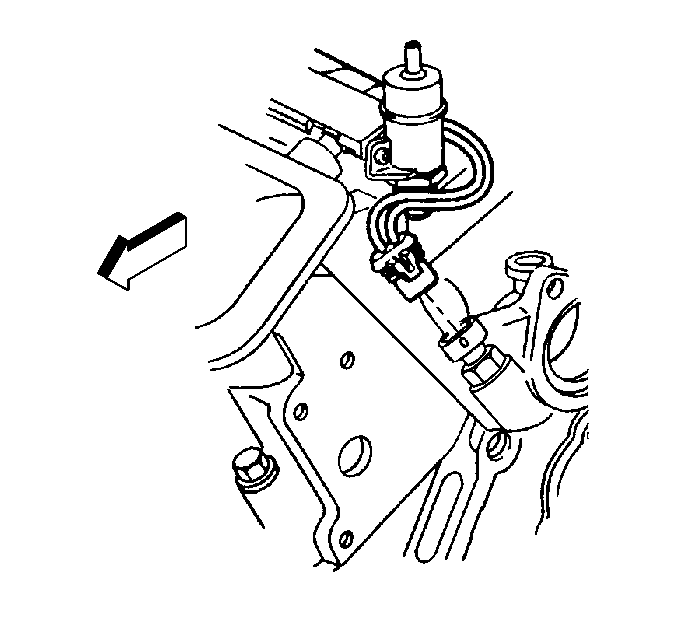
The scan tool displays engine coolant temperature in degrees. After engine startup, the temperature should rise steadily to about 90°C (194°F) then stabilize when thermostat opens. If the engine has not been run for several hours (overnight), the engine coolant temperature and intake air temperature displays should be close to each other. A hard fault in the engine coolant sensor circuit should set DTC P0117 Engine Coolant Temperature (ECT) Sensor Circuit Low Voltage , or DTC P0118 Engine Coolant Temperature (ECT) Sensor Circuit High Voltage , an intermittent fault should set a DTC P1114 Engine Coolant Temperature (ECT) Sensor Circuit Intermittent Low Voltage , or DTC P1115 Engine Coolant Temperature (ECT) Sensor Circuit Intermittent High Voltage .
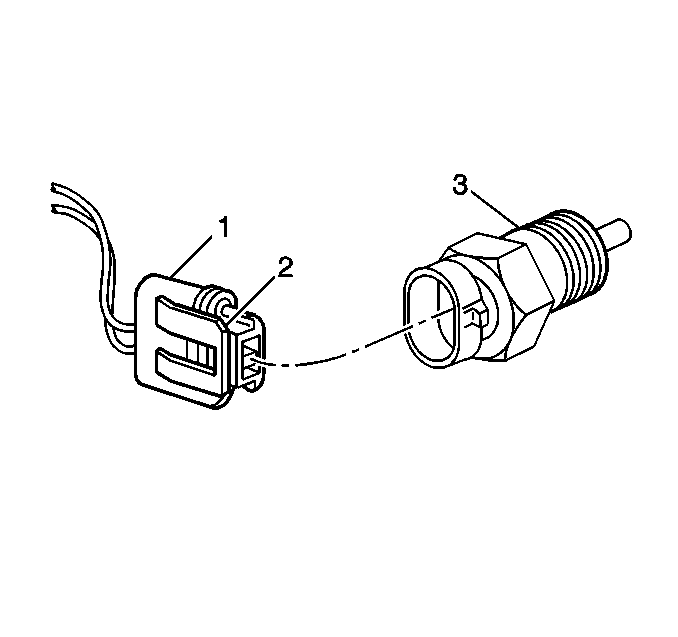
The ECT sensor (3) also contains another circuit which is used to operate the engine coolant temperature gauge located in the instrument panel.
Mass Air Flow (MAF) Sensor
The Mass Air Flow (MAF) sensor measures the amount of air which passes through it. The PCM uses this information to determine the operating condition of the engine, to control fuel delivery.
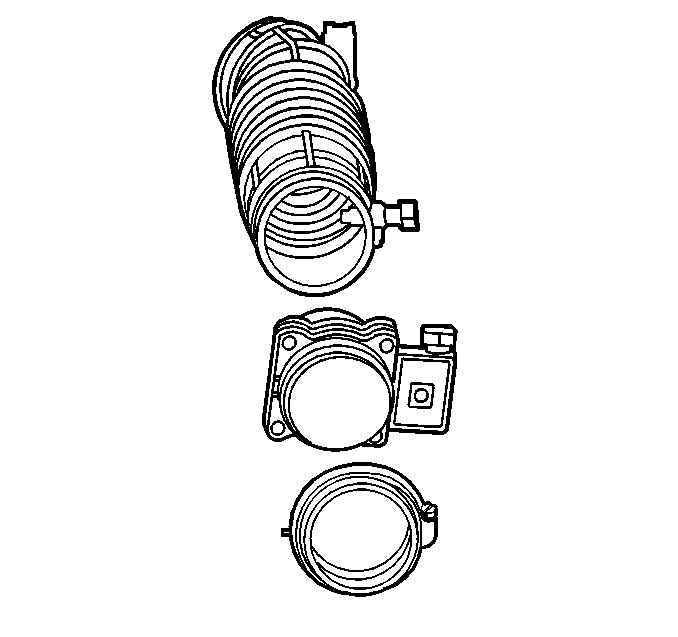
A large quantity of air indicates acceleration, while a small quantity indicates deceleration or idle.
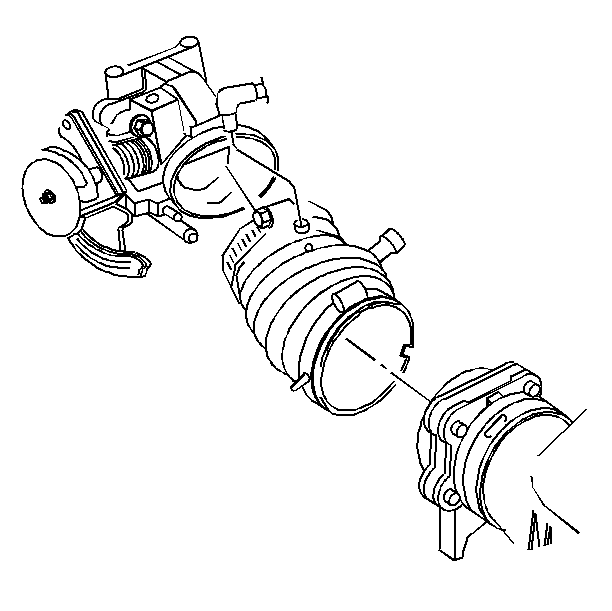
The scan tool reads the MAF value and displays it in grams per second (gm/s). At idle, it should read between 4gm/s to 6gm/s on a fully warmed up engine. Values should change rather quickly on acceleration, but values should remain fairly stable at any given RPM. A failure in the MAF sensor or circuit should set DTC P0101 Mass Air Flow (MAF) Sensor Performance , DTC P0102 Mass Air Flow (MAF) Sensor Circuit Low Frequency , or DTC P0103 Mass Air Flow (MAF) Sensor Circuit High Frequency .
Intake Air Temperature (IAT) Sensor
The Intake Air Temperature (IAT) sensor is a thermistor which changes value based on the temperature of air entering the engine. Low temperature produces a high resistance (100,000 ohms at -40°C/-40°F), while high temperature causes low resistance (70 ohms at 130°C/266°F).
The PCM supplies a 5.0 volt signal to the sensor through a resistor in the PCM and measures the voltage. The voltage will be high when the incoming air is cold, and low when the air is hot. By measuring the voltage, the PCM calculates the incoming air temperature. The IAT sensor signal is used to adjust spark timing according to incoming air density.

The scan tool displays temperature of the air entering the engine, which should read close to ambient air temperature when the engine is cold, and rise as the underhood temperature increases.

If the engine has not been run for several hours (overnight) the IAT sensor temperature and engine coolant temperature should read close to each other. A failure in the IAT sensor circuit should set DTC P0112 Intake Air Temperature (IAT) Sensor Circuit Low Voltage or DTC P0113 Intake Air Temperature (IAT) Sensor Circuit High Voltage .
Manifold Absolute Pressure (MAP) Sensor
The Manifold Absolute Pressure (MAP) sensor responds to changes in intake manifold pressure (vacuum). The MAP sensor signal voltage to the PCM varies from below 2.0 volts at idle (high vacuum) to above 4.0 volts with the key ON, engine not running or at wide open throttle (low vacuum).
The MAP sensor is used to determine manifold pressure changes while the linear EGR flow test diagnostic is being run, refer to DTC P0401 Exhaust Gas Recirculation (EGR) Flow Insufficient , to determine engine vacuum level for other diagnostics and to determine Barometric Pressure (BARO).

If the PCM detects a voltage that is lower than the possible range of the MAP sensor, DTC P0107 Manifold Absolute Pressure (MAP) Sensor Circuit Low Voltage will be set. A signal voltage higher than the possible range of the sensor will set DTC P0108 Manifold Absolute Pressure (MAP) Sensor Circuit High Voltage . An intermittent low or high voltage will set DTC P1107 Manifold Absolute Pressure (MAP) Sensor Circuit Intermittent Low Voltage or DTC P1106 Manifold Absolute Pressure (MAP) Sensor Circuit Intermittent High Voltage respectively. The PCM can also detect a shifted MAP sensor. The PCM compares the MAP sensor signal to a calculated MAP based on throttle position and various engine load factors.
Fuel Control Heated Oxygen Sensor (HO2S 1)
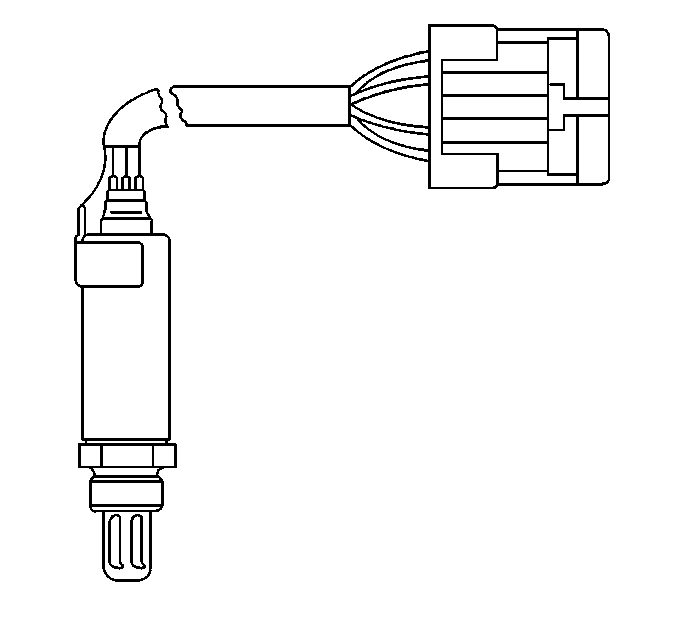
The fuel control Heated Oxygen Sensor (HO2S 1) is mounted in the exhaust manifold where it can monitor the oxygen content of the exhaust gas stream. The oxygen present in the exhaust gas reacts with the sensor to produce a voltage output. This voltage should constantly fluctuate from approximately 100mV (high oxygen content lean mixture) to 900mV (low oxygen content rich mixture). The heated oxygen sensor voltage can be monitored with a scan tool. By monitoring the voltage output of the oxygen sensor, the PCM calculates what fuel mixture command to give to the injectors (lean mixture low HO2S voltage = rich command, rich mixture high HO2S voltage = lean command).

The HO2S 1 circuit, if open, should set a DTC P0134 HO2S Circuit Insufficient Activity Sensor 1 and the scan tool will display a constant voltage between 400 - 500mV. A constant voltage below 300mV in the sensor circuit (circuit grounded) should set DTC P0131 HO2S Circuit Low Voltage Sensor 1 , while a constant voltage above 800mV in the circuit should set DTC P0132 HO2S Circuit High Voltage Sensor 1 . A fault in the HO2S 1 heater circuit should cause DTC P0135 to set. The PCM can also detect HO2S response problems. If the response time of an HO2S is determined to be too slow, the PCM will store a DTC that indicates degraded HO2S performance.
Catalyst Monitor Heated Oxygen Sensor (HO2S 2)
To control emissions of Hydrocarbons (HC), Carbon Monoxide (CO), and Oxides of Nitrogen (NOx), a three way catalytic converter is used. The catalyst within the converter promotes a chemical reaction which oxidizes the HC and CO present in the exhaust gas, converting them into harmless water vapor and carbon dioxide. The catalyst also reduces NOx, converting it to nitrogen. The PCM has the ability to monitor this process using the HO2S 1 and the HO2S 2 heated oxygen sensors. The HO2S 1 sensor produces an output signal which indicates the amount of oxygen present in the exhaust gas entering the three way catalytic converter. The HO2S 2 sensor produces an output signal which indicates the oxygen storage capacity of the catalyst, this in turn indicates the catalyst's ability to convert exhaust gases efficiently. If the catalyst is operating efficiently, the HO2S 1 signal will be far more active than that produced by the HO2S 2 sensor.
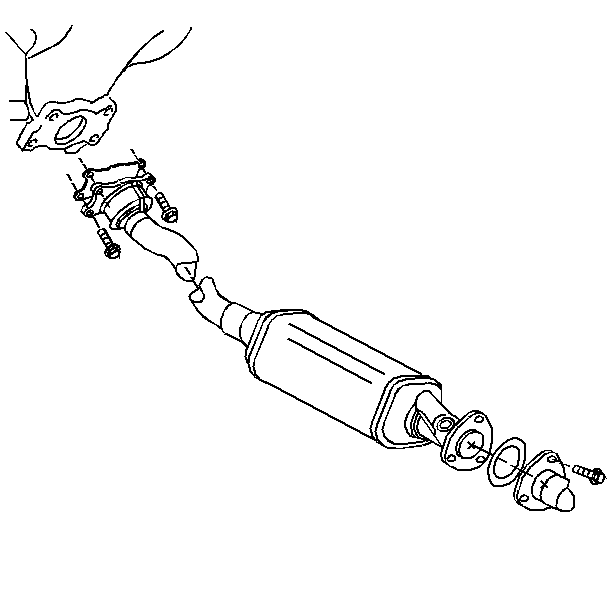
The catalyst monitor sensors operate the same as the fuel control sensors. Although the HO2S 2 sensors' main function is catalyst monitoring, it also plays a limited role in fuel control. If the sensor output indicates a voltage either above or below the 450 millivolt bias voltage for an extended period of time, the PCM will make a slight adjustment to fuel trim to ensure that fuel delivery is correct for catalyst monitoring.
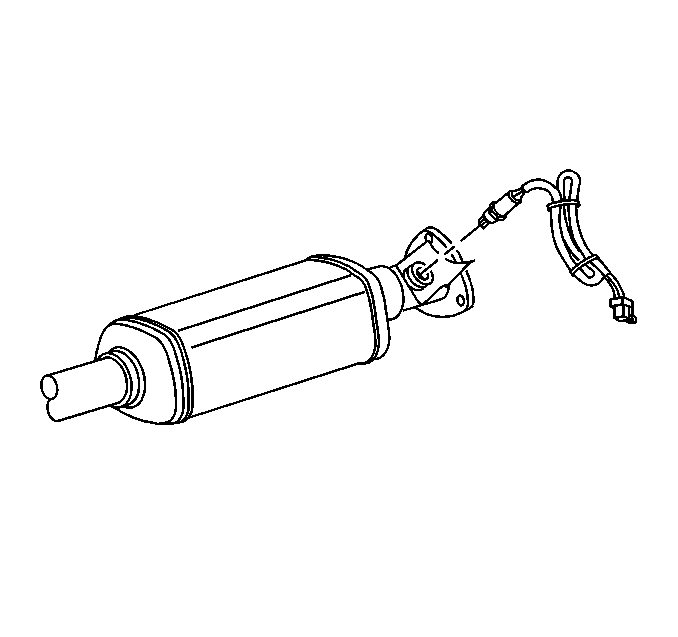
A problem with the HO2S 2 signal circuit should set DTC P0137 HO2S Circuit Low Voltage Sensor 2 , DTC P0138 HO2S Circuit High Voltage Sensor 2 , or DTC P0140 HO2S Circuit Insufficient Activity Sensor 2 , depending on the specific condition. A fault in the heated oxygen sensor heater element or its ignition feed or ground will result in slower oxygen sensor response. This may cause erroneous catalyst monitor diagnostic results. A fault in the HO2S 2 heater circuit should cause DTC P0141 HO2S Heater Performance Sensor 2 to set.
Throttle Position (TP) Sensor
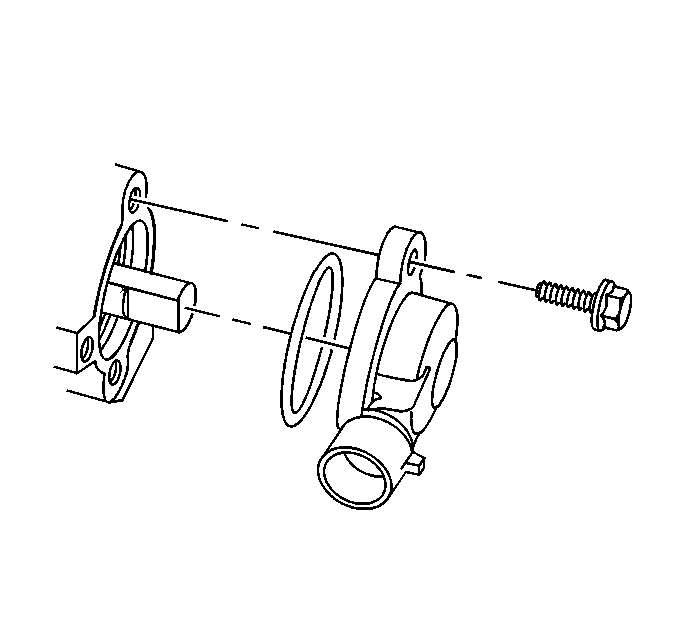
The Throttle Position (TP) sensor is a potentiometer connected to the throttle shaft on the throttle body. By monitoring the voltage on the signal line, the PCM calculates throttle position. As the throttle valve angle is changed (accelerator pedal moved), the TP sensor signal also changes. At a closed throttle position, the output of the TP sensor is low. As the throttle valve opens, the output increases so that at Wide Open Throttle (WOT), the output voltage should be above 4.0 volts.

The PCM calculates fuel delivery based on throttle valve angle (driver demand). A broken or loose TP sensor may cause intermittent bursts of fuel from an injector and unstable idle because the PCM thinks the throttle is moving. A hard failure in the TP sensor 5.0 volt reference or signal circuits should set either a DTC P0122 Throttle Position (TP) Sensor Circuit Low Voltage or DTC P0123 Throttle Position (TP) Sensor Circuit High Voltage . A hard failure with the TP sensor ground circuit may set DTCs DTC P0107 Manifold Absolute Pressure (MAP) Sensor Circuit Low Voltage , DTC P0112 Intake Air Temperature (IAT) Sensor Circuit Low Voltage , DTC P0123 Throttle Position (TP) Sensor Circuit High Voltage , or DTC P0117 Engine Coolant Temperature (ECT) Sensor Circuit Low Voltage . Once a DTC is set, the PCM will use an artificial default value based on engine RPM, engine load and mass air flow for throttle position and some vehicle performance will return. A high idle may result when either DTC P0122 Throttle Position (TP) Sensor Circuit Low Voltage , or DTC P0123 Throttle Position (TP) Sensor Circuit High Voltage is set.

The PCM can detect intermittent TP sensor faults. DTC P1121 Throttle Position (TP) Sensor Circuit Intermittent High Voltage , or DTC P1122 Throttle Position (TP) Sensor Circuit Intermittent Low Voltage will set if an intermittent high or low circuit failure is being detected.
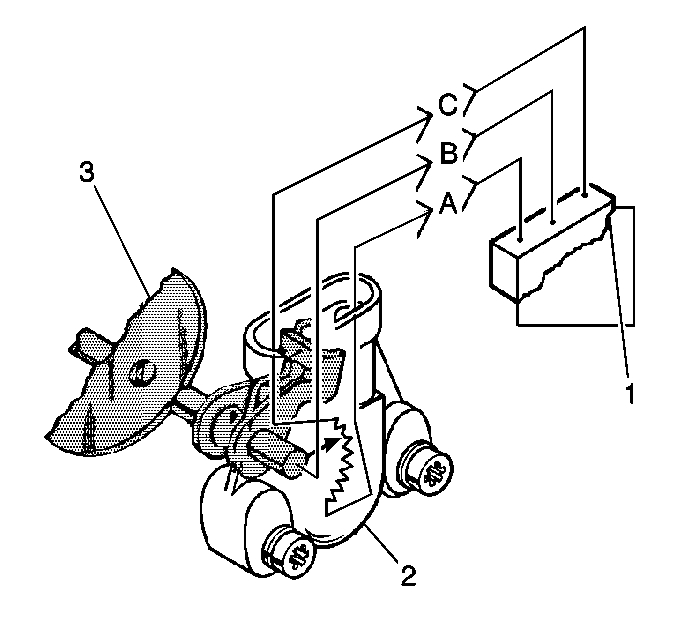
The PCM can also detect a shifted TP sensor. The PCM monitors throttle position and compares the actual TP sensor reading to a predicted TP value calculated from engine speed. If the PCM detects an out of range condition, DTC P0121 Throttle Position (TP) Sensor Performance will be set.
EGR Pintle Position Sensor
The EGR pintle position sensor is an integral part of the EGR valve assembly. This sensor can not be serviced separately from the EGR valve assembly.

The PCM monitors the EGR valve pintle position input to ensure that the valve responds properly to commands from the PCM and to detect a fault if the pintle position sensor and control circuits are open or shorted.
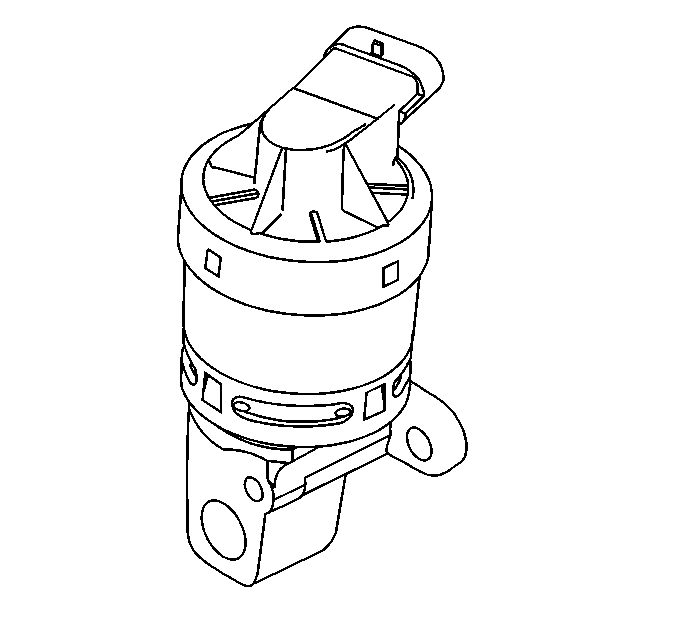
If the PCM detects a pintle position signal voltage outside the normal range of the pintle position sensor, or a signal voltage that is not within a tolerance considered acceptable for proper EGR system operation, the PCM will set DTC P1404 EGR Valve Stuck Open .
Knock Sensor (KS)

The knock sensor detects abnormal vibration (spark knocking) in the engine. The sensor is located on the engine block near the cylinders. The sensor produces an AC output voltage which increases with the severity of the knock. This signal voltage is input to the PCM. The PCM then adjusts the Ignition Control (IC) timing to reduce spark knock. DTC P0325 Knock Sensor Module Performance and DTC P0327 Knock Sensor (KS) Circuit are designed to diagnose the PCM, the knock sensor, and related wiring, so problems encountered with the KS system should set a DTC.
Refer to Knock Sensor (KS) System Description .
PCM Controlled A/C
This vehicle may be equipped with dual zone A/C (CJ2) system. This system is designed to provide a comfortable environment inside the passenger side, the dual zone A/C system is controlled by vacuum and electronic circuits. Both electronic and vacuum circuits determine air intake and discharge locations. PCM Controlled A/C operation is the same for either system. Refer to Powertrain Control Module Controlled Air Conditioning Description .
Transaxle Controls
The electrical components of this unit are as follows:
| • | Two shift solenoid valves: 1-2/3-4 and 2-3 |
| • | A torque converter clutch pulse width modulation (TCC PWM) solenoid valve |
| • | A pressure control (PC) solenoid valve |
| • | An automatic transmission fluid temperature (TFT) sensor |
| • | Two speed sensors: input shaft and vehicle speed sensors |
| • | An automatic transmission fluid pressure (TFP) manual valve position switch |
| • | Either an Internal Mode Switch or an exterior-mounted Transmission Range Switch. See the data referenced by the Scan Tool or refer to Automatic Transmission Electronic Component Views . |
| • | An automatic transmission (A/T) wiring harness assembly |
For more information, refer to Electronic Component Description .
7X Crankshaft Position (CKP) Sensor
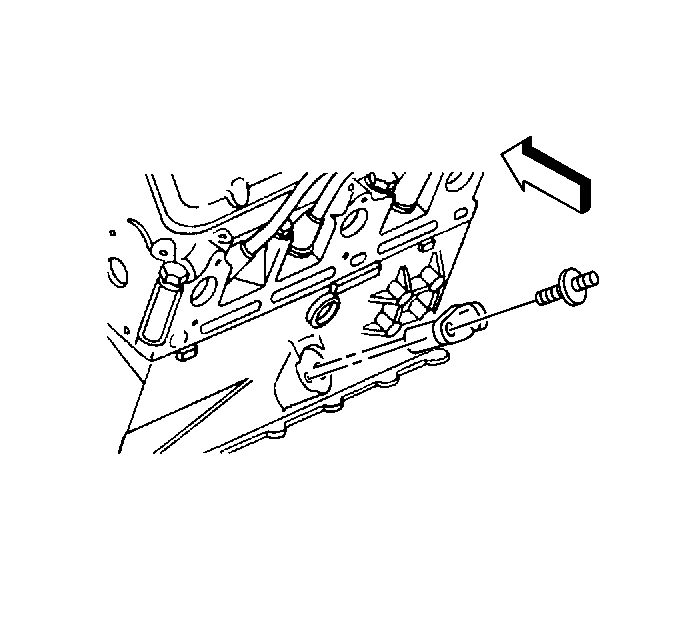
The 7X crankshaft position sensor provides a signal used by the ignition control module.
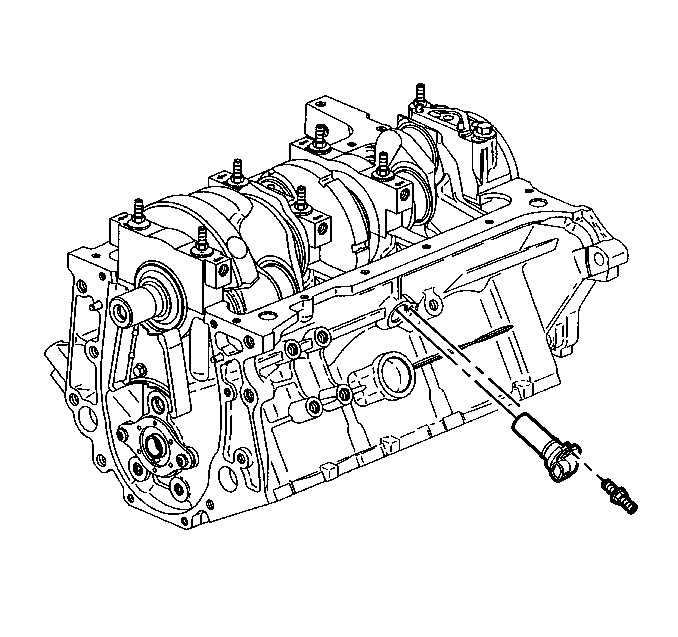
The ignition control module also uses the 7X crankshaft position sensor to generate 3X reference pulses which the PCM uses to calculate RPM and crankshaft position.
24X Crankshaft Position (CKP) Sensor
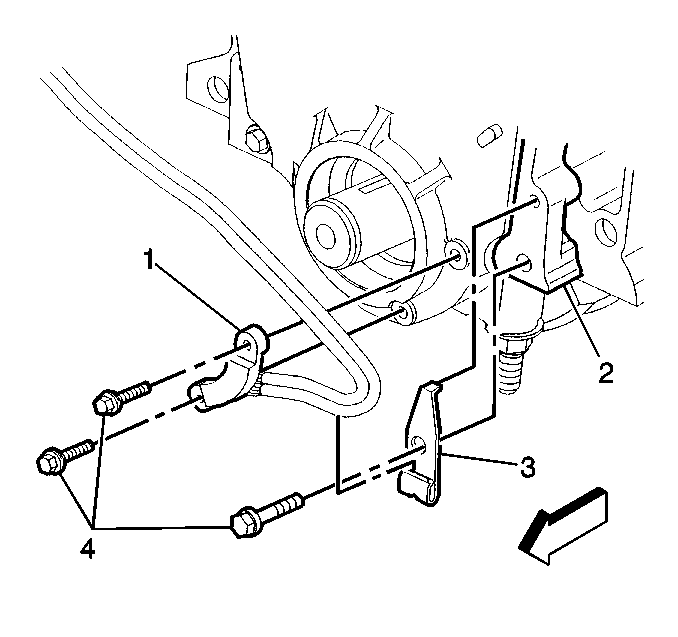
The 24X Crankshaft Position (CKP) sensor is used to improve idle spark control at engine speeds up to approximately 1600 RPM.

3X Reference
The PCM uses this signal, from the ignition control module to calculate engine speed and crankshaft position over 1600 RPM.
The PCM also uses the pulses on this circuit to initiate injector pulses. If the PCM receives no pulses on this circuit, DTC P1374 Crankshaft Position (CKP) High to Low Resolution Frequency Correlation will set and the PCM will use the 24X reference signal circuit for fuel and ignition control.
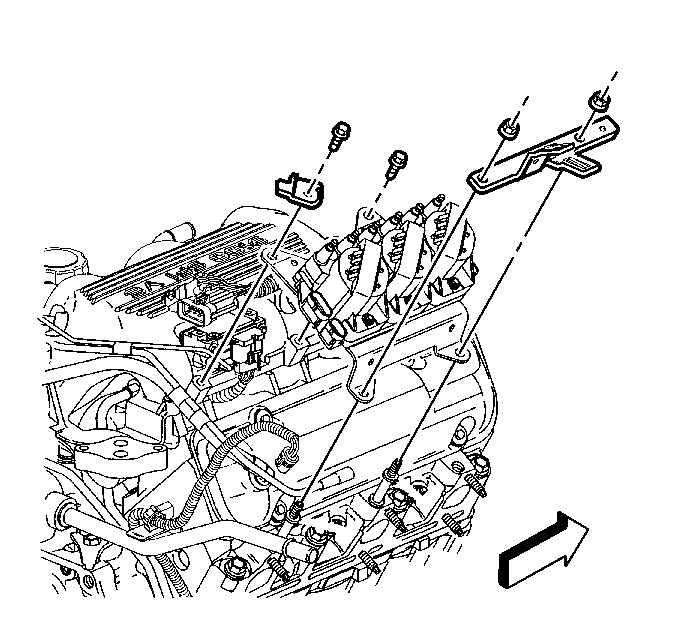
This is a ground circuit for the digital RPM counter inside the PCM, but the wire is connected to engine ground only through the ignition control module. Although this circuit is electrically connected to the PCM, it is not connected to ground at the PCM.
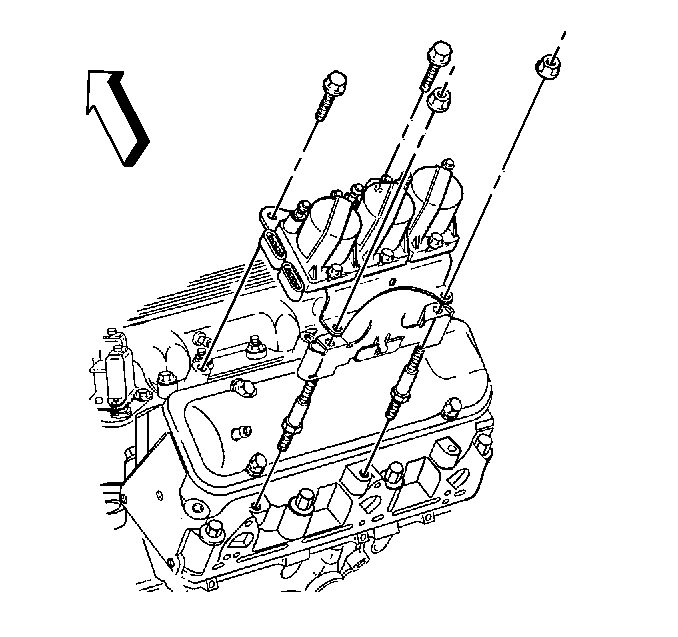
The PCM compares voltage pulses on the reference input circuits to pulses on this circuit, ignoring pulses that appear on both.
Camshaft Position (CMP) Sensor and CAM Signal
The camshaft position sensor sends a cam signal to the PCM which uses it as a sync pulse to trigger the injectors in proper sequence. The PCM uses the CAM signal to indicate the position of the #1 piston during its intake stroke. This allows the PCM to calculate true Sequential Fuel Injection (SFI) mode of operation. If the PCM detects an incorrect CAM signal while the engine is running, DTC P0341 Camshaft Position (CMP) Sensor Performance will set.
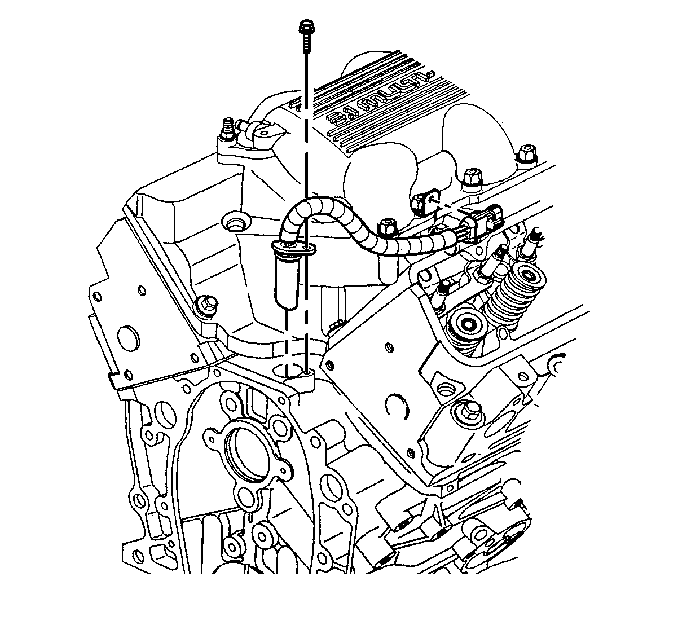
If the CAM signal is lost while the engine is running, the fuel injection system will shift to a calculated sequential fuel injection mode based on the last fuel injection pulse, and the engine will continue to run. The engine can be restarted and will run in the calculated sequential mode as long as the fault is present with a 1 in 6 chance of injector sequence being correct.
Cruise Control
The Cruise Control Module sends the cruise status input to the PCM to indicate when cruise control is engaged.
The PCM monitors the cruise status signal while commanding cruise to be disengaged via the cruise inhibit circuit. Any of the following conditions may cause the PCM to inhibit cruise control operation:
The cruise control module terminal K is the vehicle speed signal input terminal through circuit 817. In operation, the voltage varies between 0.0-5.0V. The cruise control module terminal J is used to signal the Powertrain Control Module (PCM) when cruise control is engaged through circuit 85. The PCM will then determine the correct shift pattern for the transmission. The cruise control module terminal H is used by the PCM through circuit 83, to inhibit cruise control when conditions inconsistent with cruise operation are present.
The PCM will inhibit cruise control under the following conditions:
| • | When vehicle speed is less than 40 km/h (25 mph). |
| • | When PARK, REVERSE, NEUTRAL, or 1st gear is indicated by the transaxle range switch. |
| • | When an over/under battery voltage condition exists. |
| • | With low engine RPM. |
| • | With high engine RPM (fuel cut-off). |
| • | ABS system is active for longer than 2 seconds. |
Engine Oil Level Switch
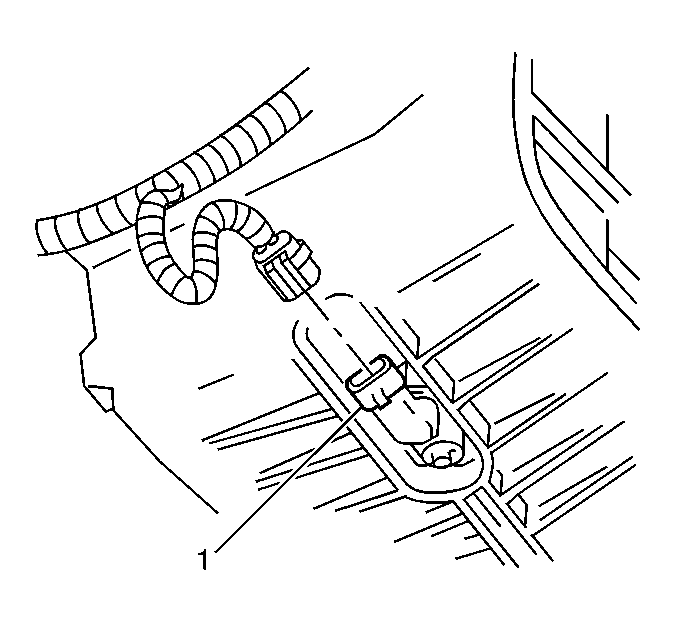
The PCM monitors the Engine Oil Level Switch signal at start-up to determine if the engine oil is OK. If the PCM determines that a low oil level condition exists, it will illuminate the indicator lamp.
PCM Controlled Warning Lamps
The PCM controlled lamps are intended to alert the driver to an operating condition which may require immediate attention.
MIL Operation
The Malfunction Indicator Lamp (MIL) is located on the instrument panel and is displayed as CHECK ENGINE lamp.
MIL Function
| • | The MIL informs the driver that a malfunction has occurred and the vehicle should be taken in for service as soon as possible |
| • | The MIL illuminates during a bulb test and a system test |
| • | A DTC will be stored if a MIL is requested by the diagnostic |
MIL Illumination
| • | The MIL will illuminate with ignition switch ON and the engine not running |
| • | The MIL will turn OFF when the engine is started |
| • | The MIL will remain ON if the self-diagnostic system has detected a malfunction |
| • | The MIL may turn OFF if the malfunction is not present |
| • | If the MIL is illuminated and then the engine stalls, the MIL will remain illuminated so long as the ignition switch is ON. |
| • | If the MIL is not illuminated and the engine stalls, the MIL will not illuminate until the ignition switch is cycled OFF, then ON. |
Charge Warning Indicator
The PCM controls the charge warning indicator. The instrument cluster turns the indicator ON during the engine start up in order to perform a bulb test. The powertrain control module (PCM) turns ON the indicator when an undervoltage (11.2 Volts) or overvoltage (18.0 Volts) is detected.
Hot Coolant Indicator
The PCM continuously monitors the engine coolant temperature sensor. The PCM controls Hot Coolant indicator during the following instances:
| • | At an engine coolant temperature of approximately 124° C (255° F) |
| • | At a sender resistance of approximately 53 ohms |
Low Oil Level Indicator
The PCM controls the low oil level indicator. The PCM samples the oil level once per ignition cycle, at power up only, if the criteria are met, indicating that the oil has had sufficient time to drain into the oil pan from the last power down. If the engine coolant temperature is greater than 75° C (167° F) at power down, the PCM will sample the oil level after 3 minutes have elapsed. If the engine coolant temperature is less than 75° C (167° F) at power down, the PCM will look for at least an 11° C (20° F) drop in the engine coolant temperature, before sampling the oil level at power up.
Fuel Guage
The Fuel Level Sensor consists of the following components: float, the wire float arm, and the ceramic resistor card. The Fuel Level Sensor is mounted on the Modular Fuel Sender Assembly and is used as an input to the PCM. The PCM uses this information as a fuel level input for Various diagnostics. The PCM controls the Fuel Gauge by grounding the Fuel Gauge Control circuit.
Tachometer
The tachometer displays the engine speed in RPM. The voltage pulses are taken from the PCM and sent to the tachometer. The tachometer responds to the frequency of the voltage pulses that increase with the engine speed. The solid state circuits process the pulses into a signal that drives the tachometer.
Speedometer
The vehicle speed sensor (VSS) is a gear driven permanent magnet generator housed in the transaxle. The sensor generates a sine wave output with a frequency proportional to the vehicle speed. The PCM converts the signal to an output that switches to ground at a frequency of 4000 pulses per mile. The signal CKT drives the speedometer and the odometer and is used by various vehicle components.
PRNDL Indicator
The transmission range (TR) switch is part of the park/neutral position (PNP) and back-up lamp switch assembly, which is externally mounted on the transmission manual shaft. The TR switch contains four internal switches that indicate the transmission gear range selector lever position. The PCM supplies ignition voltage to each switch circuit. As the gear range selector lever is moved, the state of each switch may change, causing the circuit to open or close. An open circuit or switch indicates a high voltage signal. A closed circuit or switch indicates a low voltage signal. The PCM detects the selected gear range by deciphering the combination of the voltage signals. The PCM compares the actual voltage combination of the switch signals to a TR switch combination table stored in memory.
Change Oil Soon Indicator
The PCM determines the amount of oil life from the various sensors and inputs within the engine control system. When the PCM determines that an oil life of 0% is present, the PCM turns ON the change oil soon indicator by supplying ground.
